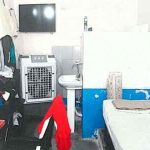WASHINGTON: On Thursday, Boeing’s new Starliner capsule and its first-ever two-person NASA crew successfully docked with the International Space Station, passing a crucial test to demonstrate the ship’s flightworthiness and ratcheting up the rivalry between Boeing and Elon Musk.
The mission should not be compromised, according to Boeing and NASA, despite an earlier loss of several guidance-control jet thrusters, some of which were caused by a helium propulsion leak. Nevertheless, the rendezvous was accomplished.
After launching from Cape Canaveral Space Force Station in Florida, the CST-100 Starliner carried veteran astronauts Barry “Butch” Wilmore and Sunita “Suni” Williams. The spacecraft flew for about 27 hours before reaching the orbital platform.
The crew named the reusable capsule “Calypso” and it was sent into orbit on Wednesday aboard an Atlas V rocket operated by Boeing-Lockheed Martin’s joint venture United Launch Alliance.
At 1734 GMT, it automatically docked with the International Space Station (ISS) while both spacecraft were orbiting 400 km over the southern Indian Ocean. The two spacecraft were traveling at roughly 28,160 km/h.
A NASA livestream captured the spacecraft’s last approach to the International Space Station and docking, which came after a brief period during which Wilmore manually maneuvered the capsule.
Shortly after docking, Wilmore radioed to mission control in Houston, saying, “Nice to be attached to the big city in the sky.”
After using a dozen hooks to firmly connect the capsule to the space laboratory, Wilmore and Williams had to carry out a number of routine tasks, such inspecting the airlock for leaks and pressurizing the spacecraft-ISS passage before opening the entry doors.
Two hours or so were estimated to be needed for that process.








